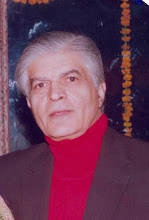
MUSCULAR SYSTEM 3
HOW MUSCLES WORKS Give and take
The movements the body can go through, are the result of contraction, and relaxation of the muscles.
A movement is produced by bringing the points of attachment of one group muscle close to each other, and relaxation of opposite group of muscle.
That is why most muscles are attached at two points across a joint.
Muscles also work in pairs as a muscle contracts another relaxes, on the apposite side of the joint to allow movement. Later to bring the contracted muscle to its original length the opposing muscle has to contract to achieve stretching of the contracted muscle.
If both groups contract at the same time, the joint remains straight as in standing still.
MUSCLE IN CONTRACTION Messages, transmitters, molecular shift and contraction
A magnification of muscle tissue will show it to be made of fiber bundles, each fiber is made of myofibrils. Each myofibril is made of millions of protein filaments of actin and myosin.
Each muscle fiber is supplied with a nerve ending that receives the message from the brain.
A muscle fiber seen under the microscope has stripes of alternating actin and myosin bundles and can shorten by a third of its resting length.
This contraction is because of messages from the nervous system.
On receiving a message through nerves (motor endplate), there is a release of acytylcholine.
This starts a chemical and electrical chain reaction involving sodium, pottasium and calcium ions which cause the myosin to slip on the actin filament.
For a strong contraction more muscle cells contract.
The shortening of muscles causes the swelling that we see in our biceps during exercise.
Any questions be sent to drmmkapur@gmail.com
All earlier posts are stored in archives for access and review
Visitors that follow the site may post contributions to the site





No comments:
Post a Comment